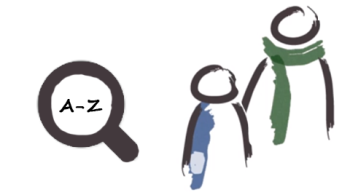| Table of contents |
 |
The FragmentCreator will no longer be supported and will no longer be available from FirstSpirit 2025.12. |
Glossary
Fragment
Fragments are small, self-contained units of content, such as a product description, a press release, contacts data, etc. Media can also be used in a fragment.
Fragments can be created, managed, and published (e.g., via FirstSpirit CaaS) regardless of context.
Fragments are created using FragmentCreator.
Variant
A variant is part of a fragment. A fragment can consist of one or more variants. The variants used in a fragment are identical in terms of content or substance. They differ, however, in terms of form. An important use case for variants is the form of language employed in content (content in different languages). Variants of a fragment can also differ in terms of scope, level of detail, or language (simple vs. complex; see Figure Fragments and variants).
FirstSpirit project
FirstSpirit projects can be opened in SiteArchitect or ContentCreator.
It includes the following areas: Content, media, structure, database content, and templates
Fragments can also be referenced (and thus reused) in FirstSpirit SiteArchitect and FirstSpirit ContentCreator if they have been configured accordingly (see FirstSpirit Fragment DAP). Moreover, referenced fragments can be edited in ContentCreator (see Using fragments).
Fragment project
Fragment projects work with other object types (“fragments” and “variants”) as classic FirstSpirit projects. Instances of these objects can be displayed and managed in SiteArchitect (see Features of fragments in SiteArchitect), but should not be edited there. FragmentCreator can be used to edit a fragment project.
It includes the following areas: Content and templates.
Remote project
FirstSpirit offers the concept of “remote projects” to enable tasks to be isolated consistently and content to be reused.
In the “remote projects”, media (images and binary files of other types, “media project”) or fragments can be managed centrally server-wide. Other projects (“target projects”) can access this data. The media or fragments of the remote projects are referenced by the target projects and remain as physical files in the remote project.
Advantages of this concept:
- Simplified updating and managing since all media/fragments are located in a centralized project. If an object changes in the remote project, the referenced object will also change in the target projects.
- No additional memory requirement for media or fragments used in multiple projects.
Remote and target projects must be located on the same FirstSpirit Server. Remote projects can be opened with FragmentCreator or ContentCreator/SiteArchitect depending on the content being managed.
Media project
Der CXT approach, whereby specific clients are used for specific tasks, means that media is also saved and managed in a separate (FirstSpirit) project. A media project can be opened in SiteArchitect or ContentCreator, but not in FragmentCreator.
The media from the media project can be referenced in FragmentCreator, images can additionally be uploaded by means of FragmentCreator (see Using media).
FragmentCreator
FragmentCreator is the first in a series of new, lightweight tools for content creation and distribution that are being developed as part of the Content Experience Tools.
From an editorial point of view, FragmentCreator is a web application that is perfectly adapted for the creation and editing of format-neutral fragments.
Content experience platform
A homogeneous, flexible and scalable development landscape that combines all “CXT tools” into a single unit with a common look and feel.
Content Experience Tools
With CXT it is possible to assemble customized CXT clients (e.g., FragmentCreator) from existing components (known as “tools”). Customers are free to decide which tools they want to use in their CXT clients and which they do not need.


